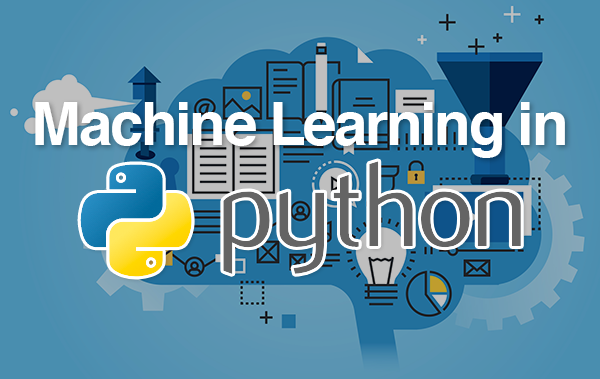How to use deep learning through sklearn in classifying adult dataset

Deep learning is a powerful technique for classifying complex datasets such as the adult dataset. In this essay, we will be discussing how to use deep learning through sklearn, a popular machine learning library in Python, to classify the adult dataset.
The first step in using deep learning to classify the adult dataset is to acquire and prepare the data. This can include acquiring the adult dataset, which can be found on various websites such as UCI Machine Learning Repository, and cleaning and preprocessing the data to ensure that it is in a format that can be used by the model. This may include handling missing values, converting categorical variables to numerical values, and splitting the data into training and test sets.
Once the data is prepared, we can import the necessary libraries such as sklearn, Tensorflow and Keras. Sklearn is a popular library for machine learning in python, it offers an array of pre-processing, cross-validation, and metrics tools. Tensorflow is an open-source library for dataflow and differentiable programming across a range of tasks, it can be used to create deep learning models and Keras is a high-level neural networks API written in Python that is capable of running on top of Tensorflow.
We can then create a deep learning model using the Sklearn library, it provides a class called MLPClassifier that allows you to create a Multi-layer Perceptron model, which is a type of deep learning model. We can specify the number of layers and the number of neurons in each layer, and the activation function. We can also specify the solver, which controls the optimization algorithm used to update the parameters of the model, and the learning rate, which controls the step size at which the optimizer approaches the minimum of the loss function.
After creating the model, we can fit the model to the training data using the fit() function. This function trains the model on the training data and updates the parameters of the model based on the training data.
After the model is trained, we can use the predict() function to make predictions on the test data. We can then evaluate the performance of the model on the test data using the score() function, which returns the accuracy of the model, which is the proportion of correctly classified samples.
It’s also important to note that when using deep learning to classify the adult dataset, it’s important to consider the specific problem you’re trying to solve and the characteristics of your data. For example, if you’re working with a dataset that has a large number of categorical variables, then you may need to use a deep learning model with more layers to handle the categorical variables. Additionally, the trade-off between model complexity and overfitting should also be considered. A model with more layers may have better performance on the training data, but it may not generalize well to new data. It’s also important to consider the interpretability of the models and the trade-off between accuracy and interpretability when making a decision.
Another important aspect when working with deep learning is the choice of the optimizer, loss function and metrics. These are the key parameters that will help you to train and evaluate the model, the optimizer controls the learning rate and the update rule for the parameters of the model. The loss function measures the difference between the predicted output and the true output and the metrics is used to evaluate the performance of the model.
In conclusion, using deep learning through sklearn to classify the adult dataset is a powerful machine learning task that can be accomplished with a few simple steps. By acquiring and preparing the data, creating a deep learning model, and training and evaluating the model, we can build a powerful machine learning model that can accurately classify the adult dataset. It’s important to keep in mind the specific problem you’re trying to solve and the characteristics of your data when using deep learning. Additionally, it’s also important to consider the interpretability of the models and the trade-off between accuracy and interpretability when making a decision. By utilizing the power of deep learning and sklearn, we can build powerful machine learning models that can accurately classify the adult dataset.
In this Applied Machine Learning & Data Science Recipe (Jupyter Notebook), the reader will find the practical use of applied machine learning and data science in Python programming: How to use deep learning through sklearn in classifying adult dataset.
Disclaimer: The information and code presented within this recipe/tutorial is only for educational and coaching purposes for beginners and developers. Anyone can practice and apply the recipe/tutorial presented here, but the reader is taking full responsibility for his/her actions. The author (content curator) of this recipe (code / program) has made every effort to ensure the accuracy of the information was correct at time of publication. The author (content curator) does not assume and hereby disclaims any liability to any party for any loss, damage, or disruption caused by errors or omissions, whether such errors or omissions result from accident, negligence, or any other cause. The information presented here could also be found in public knowledge domains.
Learn by Coding: v-Tutorials on Applied Machine Learning and Data Science for Beginners
Latest end-to-end Learn by Coding Projects (Jupyter Notebooks) in Python and R:
Applied Statistics with R for Beginners and Business Professionals
Data Science and Machine Learning Projects in Python: Tabular Data Analytics
Data Science and Machine Learning Projects in R: Tabular Data Analytics
Python Machine Learning & Data Science Recipes: Learn by Coding
How to use Keras and Tensorflow in classifing adult income data in Python
How to install, load and describe Penn Machine Learning Benchmarks